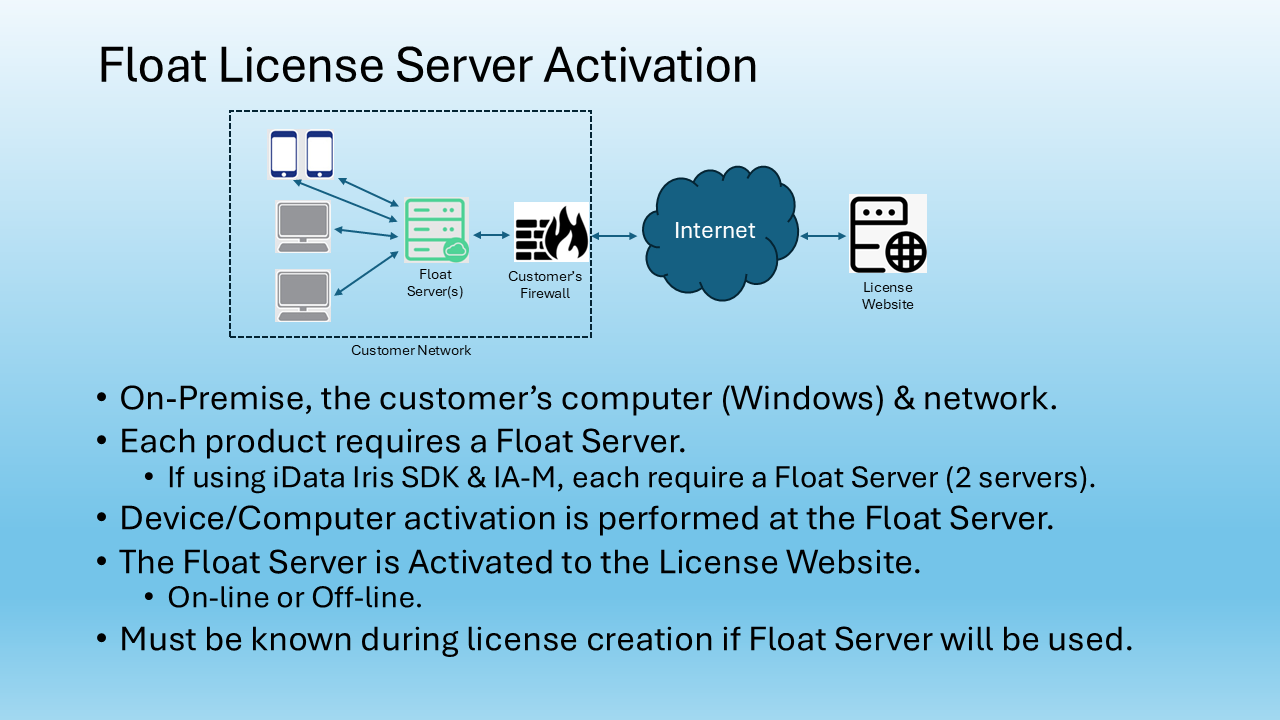Iris Recognition Technology
Iris recognition is the best of breed authentication process available today. While many mistake it for retinal scanning, iris recognition simply involves taking a picture of the iris; this picture is used solely for authentication. But what makes iris recognition the authentication system of choice?
- Stable – the unique pattern in the human iris is formed by 10 months of age, and remains unchanged throughout one’s lifetime
- Unique – the probability of two rises producing the same code is nearly impossible
- Flexible – iris recognition technology easily integrates into existing security systems or operates as a standalone
- Reliable – a distinctive iris pattern is not susceptible to theft, loss or compromise
- Non-Invasive – unlike retinal screening, iris recognition is non-contact and quick, offering unmatched accuracy when compared to any other security alternative, from distances as far as 3″ to 10″
Traditional Notions of Establishing Identity
Historically, identity or authentication conventions were based on things one possessed (a key, a passport, or identity credential), or something one knew (a password, the answer to a question, or a PIN.) This possession or knowledge was generally all that was required to confirm identity or confer privileges. However, these conventions could be compromised – as possession of a token or the requisite knowledge by the wrong individual could, and still does, lead to security breaches.
The Emergence of Biometrics
To bind identity more closely to an individual and appropriate authorization, a new identity convention is becoming more prevalent. Based not on what a person has or knows, but instead on what physical characteristics or personal behavior traits they exhibit, these are known as biometrics – measurements of behavioral or physical attributes – how an individual smells, walks, signs their name, or even types on a keyboard, their voice, fingers, facial structure, vein patterns or patterns in the iris.
Biometric Appeal of Iris Recognition
Of all the biometric technologies used for human authentication today, it is generally conceded that iris recognition is the most accurate. Coupling this high confidence authentication with factors like outlier group size, speed, usage/human factors, platform versatility and flexibility for use in identification or verification modes – as well as addressing issues like database size/management and privacy concerns – iris recognition has also shown itself to be exceedingly versatile and suited for large population applications.
Other System Components
IrisAccess system incorporates other system-designed elements. A low profile Identity Controller (ICU) offers easy greater integration convenience while ensuring that biometric templates are kept safe, protected and secure, off the imager.
The Biology Behind the Technology
Like a snowflake, the iris – the externally visible colored ring around the pupil – of every human eye is absolutely unique, exhibiting a distinctive pattern that forms randomly in utero in a process called chaotic morphogenesis. In fact, it’s estimated the chance of two iris (irides) being identical is 1 in 1078.
The Advantage of Iris Recognition
Iris recognition is an attractive technology for identity authentication for several reasons.
- The smallest outlier population of all biometrics. Few people can’t use the technology., as most individuals have at least one eye. In a few instances even blind persons have used iris recognition successfully, as the technology is iris pattern-dependent, not sight dependent.
- Iris pattern and structure exhibit long-term stability. Structural formation in the human iris is fixed from about one year in age and remains constant (barring trauma, certain rare diseases, or possible change from special some ophthalmologic surgical procedures) over time. So, once a individual is enrolled, re-enrollment requirements are infrequent. With other biometric technologies, changes in voice timbre, weight, hairstyle, finger or hand size, cuts or even the effect of manual labor can trigger the need for re-enrollment.
- Ideal for Handling Large Databases. Iris recognition is the only biometric authentication technology designed to work in the 1-n or exhaustive search mode. This makes it ideal for handling applications requiring management of large user groups, such as a National Documentation application might require.. Large databases are accommodated without degradation in authentication accuracy. IrisAccess platforms integrate well with large database back ends like Microsoft SQL and Oracle 9i.
- Unmatched Search Speed in the one to many search mode is unmatched by any other technology, and is limited not by database size, but by hardware selected for server management. In a UK Government-commissioned study, Iris ID’s IrisAccess platform searched records nearly 20 times faster than the next fastest technology. Iris ID has developed a high speed matching engine, IrisAccelerator™, designed to deliver 10 million+ matches per second.
- Versatile for the One to Many, One to One, Wiegand and Token Environments. While initially designed to work in one-to-many search mode, iris recognition works well in 1-1 matching, or verification mode, making the technology ideal for use in multifactor authentication environments where PINs, or tokens like prox or smartcards are used. In a token environment, many privacy issues related to biometric database management are moot, as the user retains control of biometric data – a small template of 512 bytes per iris.
- Safety and Security Measures In Place. Iris recognition involves nothing more than taking a digital picture of the iris pattern (from video), and recreating an encrypted digital template of that pattern. 512-byte iris templates are encrypted and cannot be re-engineered or reconstituted to produce any sort of visual image. Iris recognition therefore affords high level defense against identity theft, a rapidly growing crime. The imaging process involves no lasers or bright lights and authentication is essentially non-contact.
- Convenient, Intuitive User Interface. Using the technology is an almost intuitive experience, requiring relatively little cooperation from subjects. Proximity sensors activate the equipment, which incorporates mirror-assisted alignment functionality. Audio auto-positioning prompts, automated image capture, and visual and audio authentication decision-cueing completes the process.

